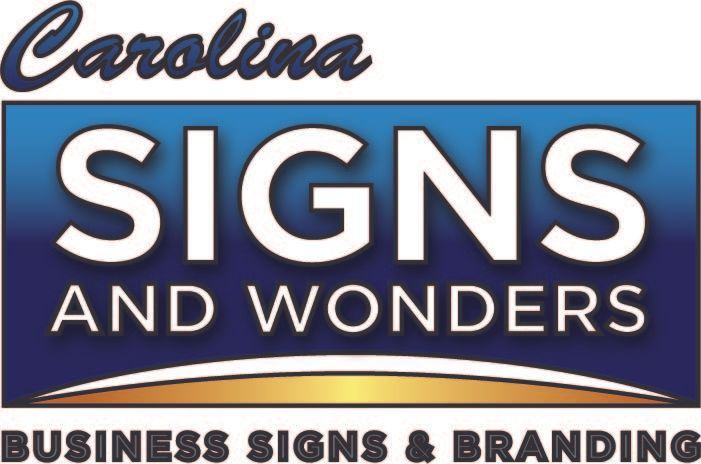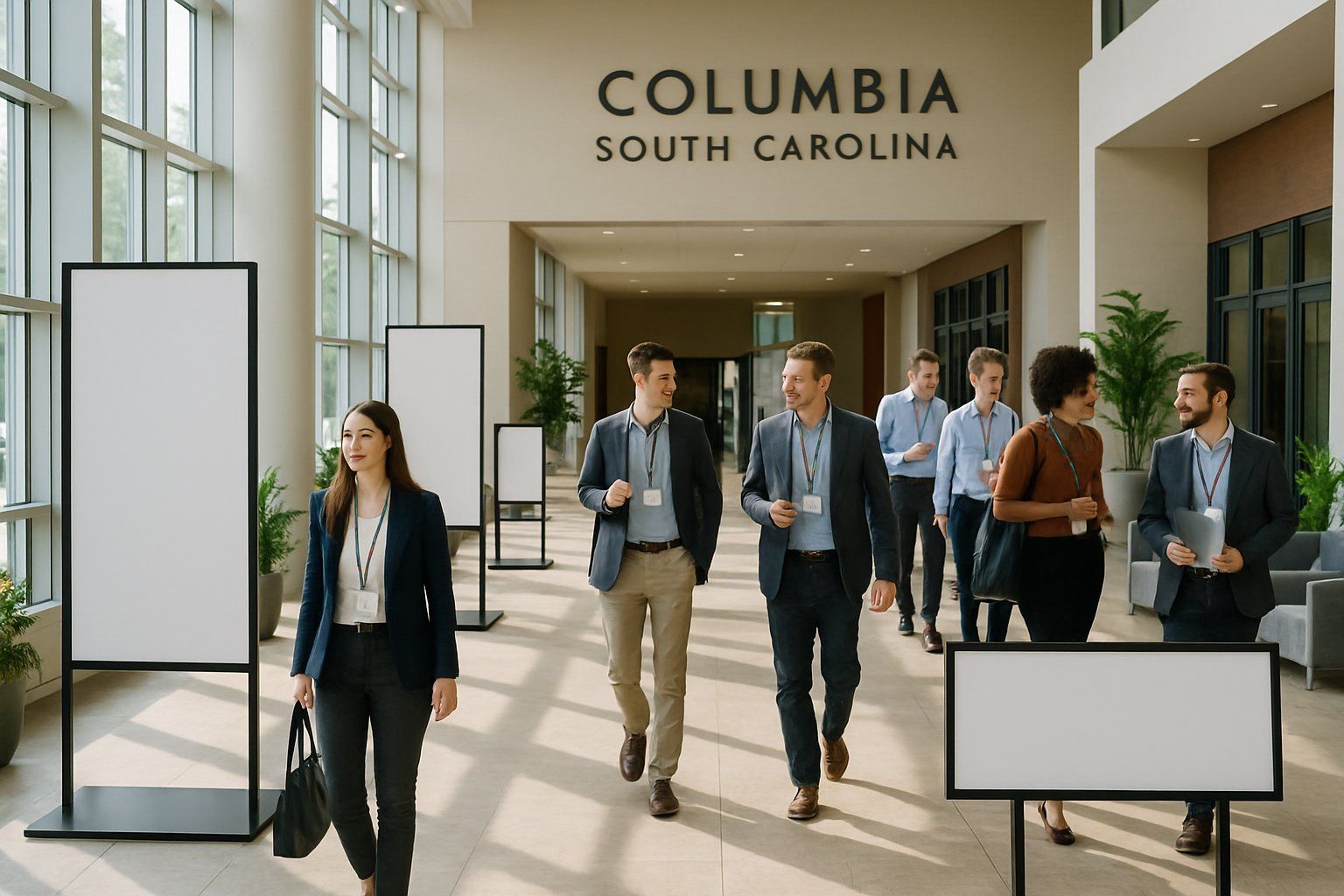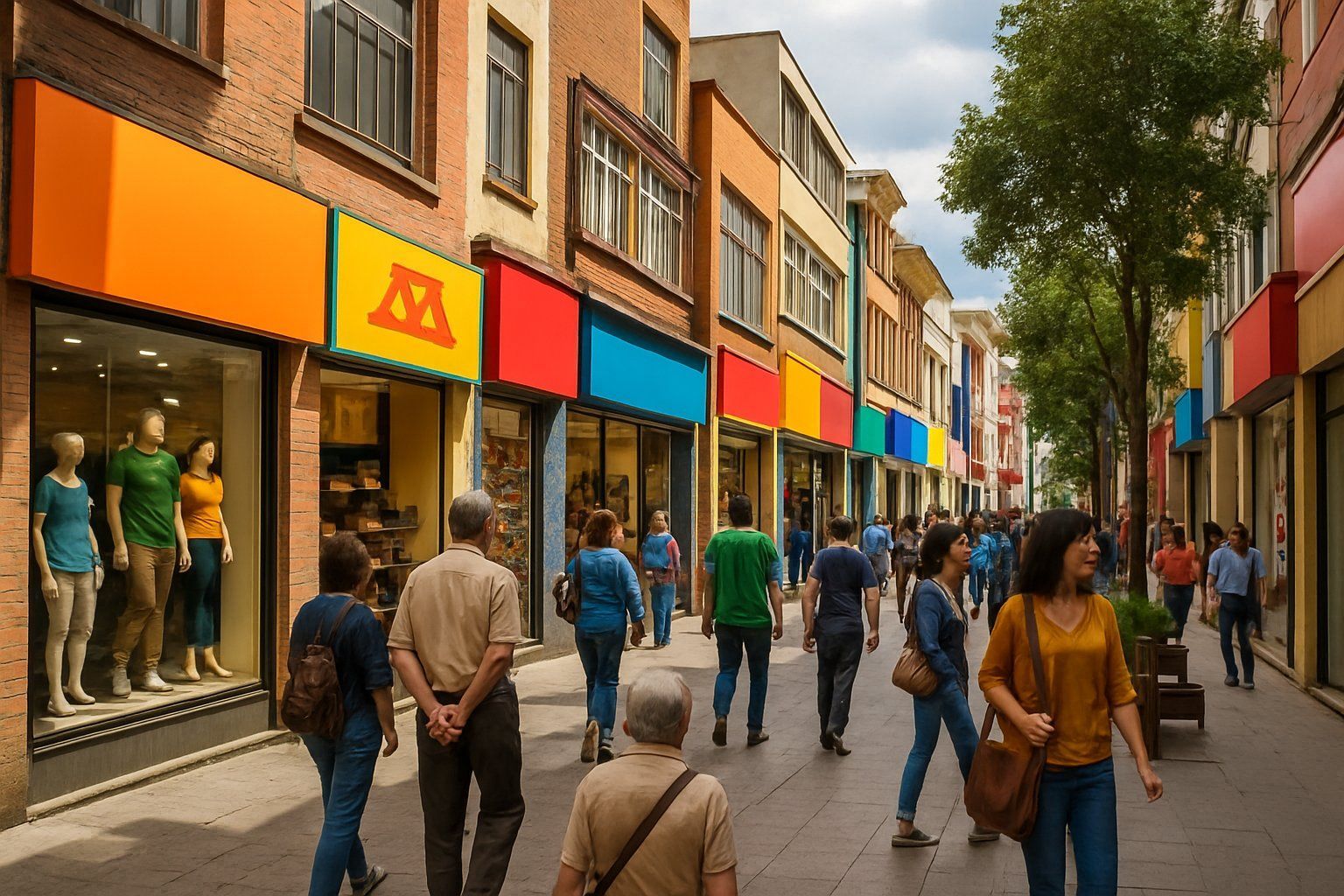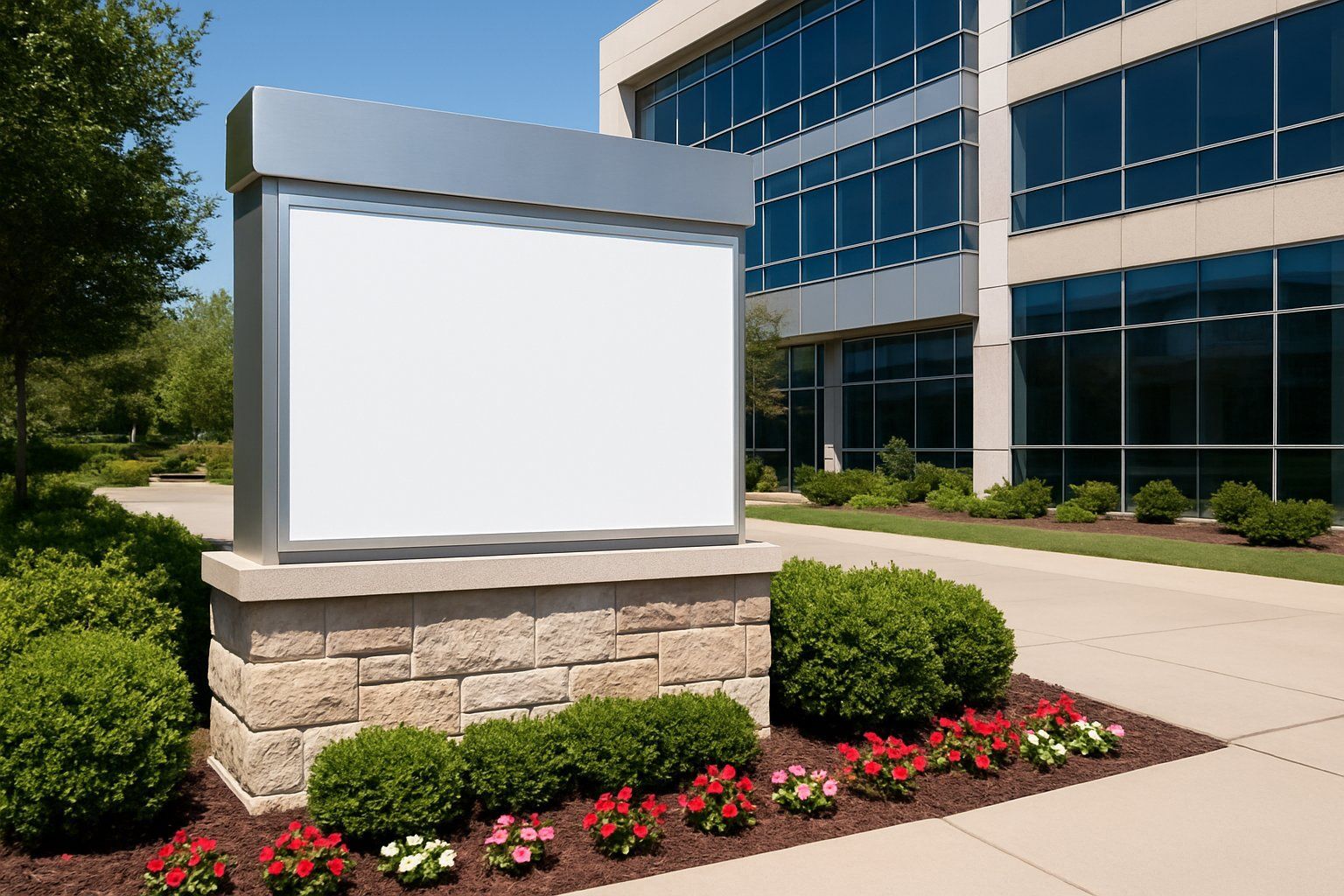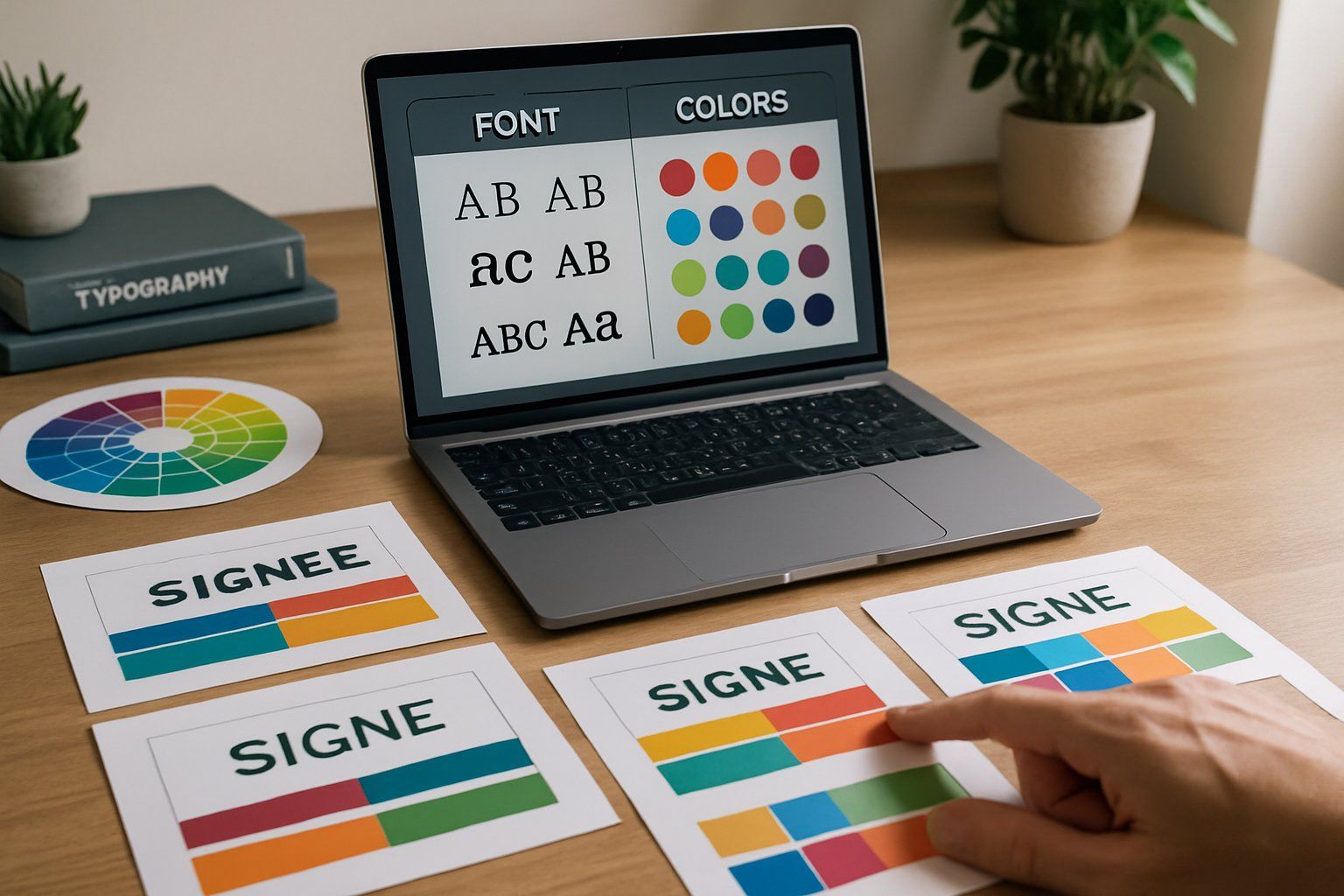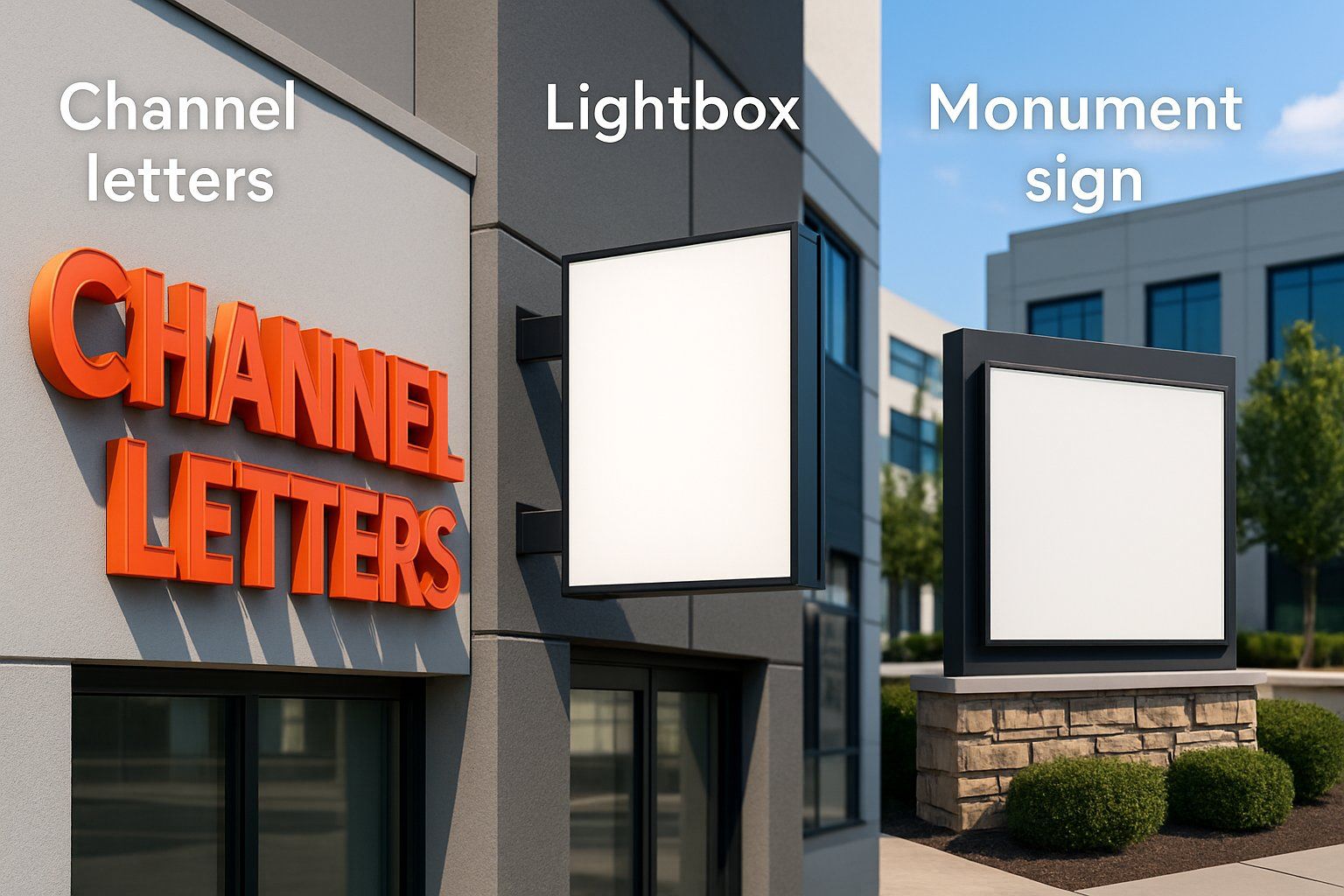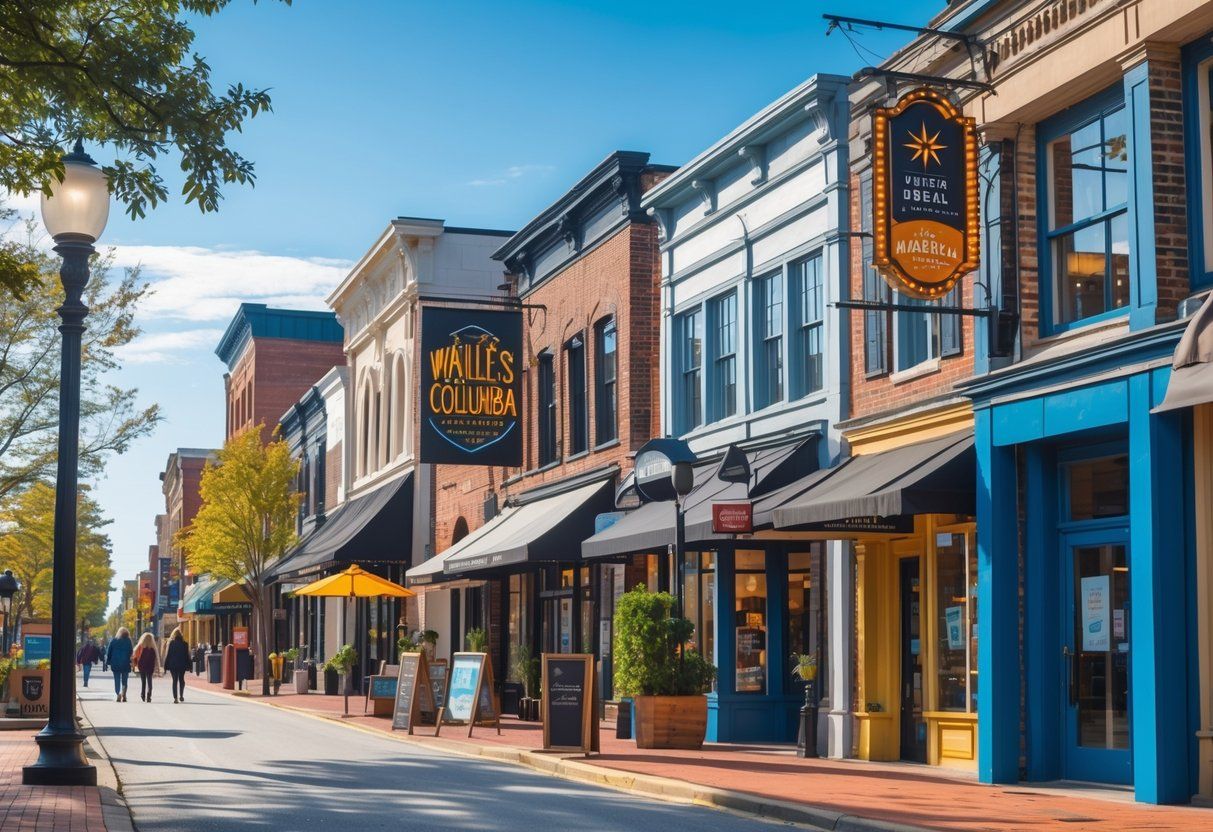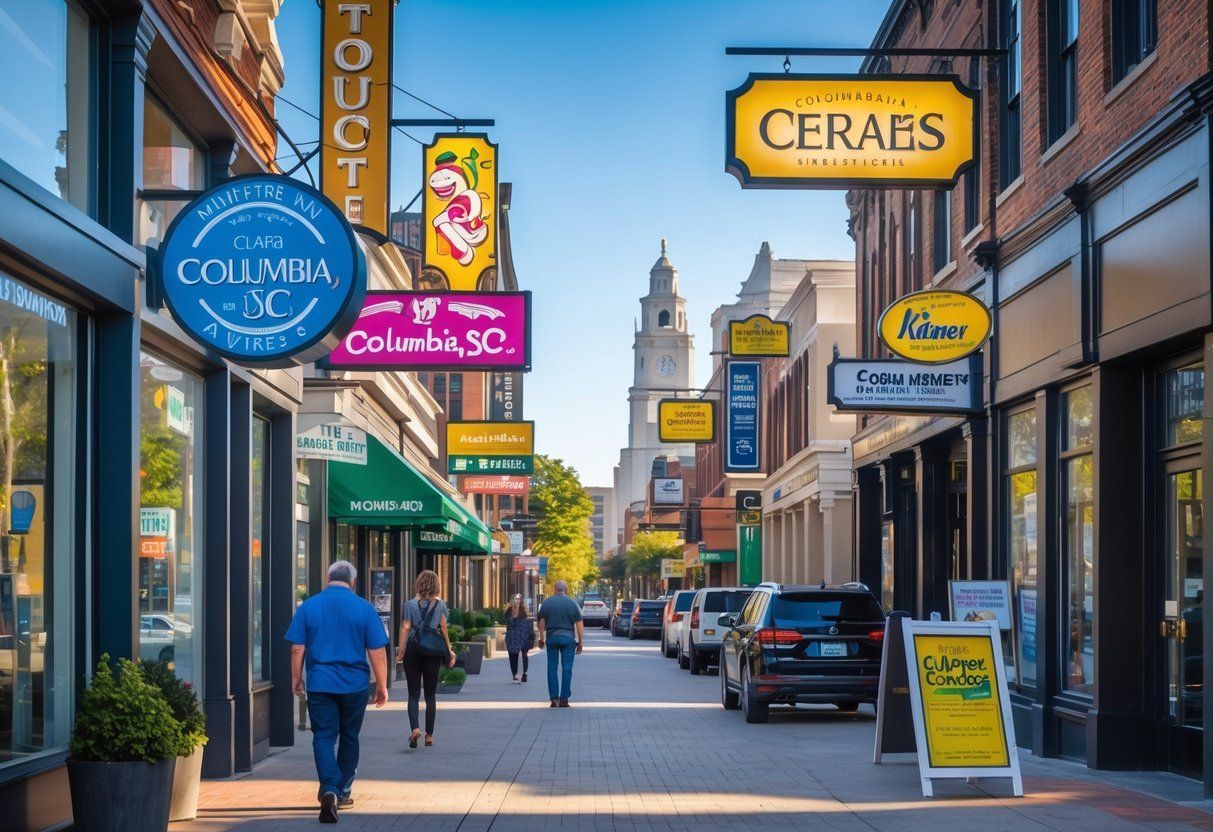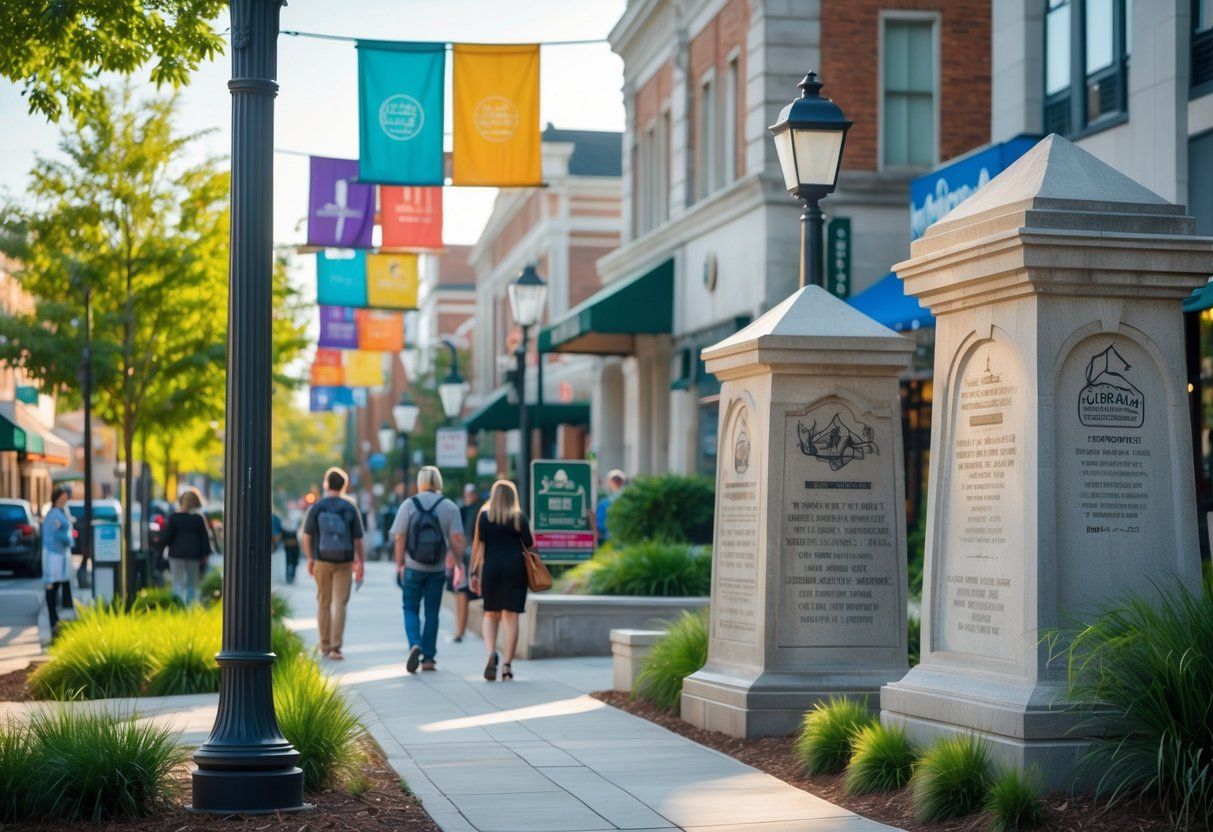Best Types of Signage for Your Business in Columbia Carolina: Complete Guide
Choosing the best type of signage is key to helping businesses in Columbia, South Carolina attract customers and build their brand. Signs are more than just labels—they inform people about the business and create lasting impressions.
The best signage depends on the business’s location, target audience, and purpose. Combining both outdoor and indoor options maximizes visibility and impact.
Outdoor signs like illuminated letters, banners, and vehicle wraps catch the eye of potential customers on the street. Indoor signs help guide visitors and reinforce the brand’s image inside the business space.
Digital and LED signs add dynamic visuals and flexibility, making it easier to update messages and promotions quickly. Custom designs and materials tailored to specific business needs can make signage stand out and reflect the unique personality of the brand.
Key Takeaways
- Effective signage combines outdoor, indoor, and digital options based on business needs.
- Custom signs help create a unique look that matches the brand’s style.
- Choosing the right sign placement and design enhances customer attraction and retention.
Understanding Signage Needs in Columbia Carolina
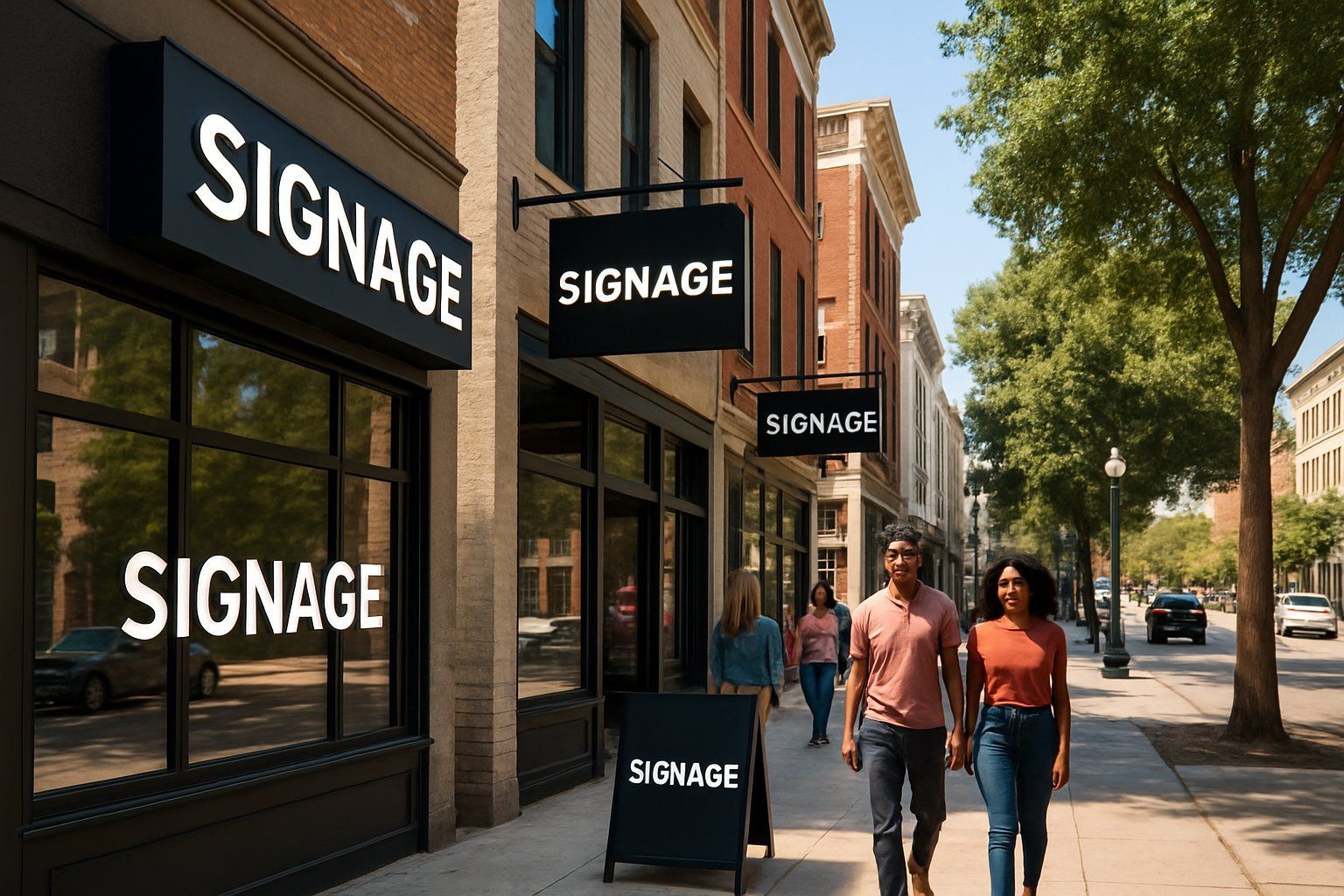
Choosing the right signage in Columbia, SC, involves knowing the local market, legal rules, and how to make a brand stand out. Effective signs suit the city’s business types, follow regulations, and catch customer attention in busy areas.
Local Business Landscape
Columbia’s economy is diverse, with retail shops, restaurants, offices, and service providers. Each business type needs specific signs.
Retail stores often use window graphics and illuminated channel letters to attract foot traffic. Restaurants benefit from bright neon or LED signs for visibility in the evening.
Office buildings rely on clear interior and exterior signs for wayfinding and branding. Businesses in shopping centers have to balance visibility with design rules of the property.
Local sign companies in Columbia understand these needs and help choose signs that fit the surroundings and business goals.
Regulatory Considerations
Signs in Columbia must meet city codes and zoning laws. These include size limits, lighting restrictions, and placement rules.
For example, monument signs require permits and have height restrictions. Columbia enforces ADA compliance, meaning signs must be accessible to people with disabilities.
This affects size, font style, and positioning. Failure to follow regulations can cause fines or the need to remove signage.
Local sign providers often guide businesses through permit processes to ensure legal compliance.
Brand Visibility Factors
To stand out in Columbia’s competitive market, signage should clearly show the brand’s identity and message. Using company colors , logos, and fonts consistently is key.
Visibility depends on sign type and location. For example, pylon signs work well near highways to capture driver attention.
Dimensional letters with lighting enhance storefront appeal day and night. Durability matters too.
Signs exposed to weather should use strong materials like aluminum or acrylic. Digital signs provide flexibility to update promotions quickly.
Smart use of lighting, size, and design elements improves a business’s presence and invites more customers.
Popular Outdoor Signage Solutions
Outdoor signs need to be clear and visible , showing a business’s name and message effectively. Different types of signs offer unique benefits depending on location, budget, and visibility needs.
Materials and lighting also play major roles in how well the sign performs in Columbia, Carolina’s weather.
Channel Letter Signs
Channel letter signs are three-dimensional letters mounted individually on a building’s exterior. They often include internal lighting , which makes them visible both day and night.
These signs are highly customizable in shape , size, and color. Many businesses choose them for storefronts because they clearly show the business name and logo from a distance.
The lighting can be LED, which is energy-efficient and long-lasting. Channel letters work well in busy areas or where visibility is important.
Their raised design also adds depth and a professional look to the storefront. Proper installation is necessary to ensure durability against wind and rain.
Monument Signs
Monument signs sit low to the ground and are freestanding, often made of stone, brick, or metal. They are visible to both pedestrians and drivers, typically placed near street entrances or parking lots.
Because of their height and solid appearance, monument signs help create a strong, permanent impression. They often include lighting at the base or backlit letters to improve visibility at night.
These signs suit businesses that want to emphasize stability and prestige, such as offices, medical centers, or schools. Regular maintenance is important to keep the materials in good condition in Columbia’s seasonal weather changes.
Pylon and Pole Signs
Pylon and pole signs are tall structures that hold large signs high above the ground. They are especially useful on busy roads or highways where other signs might be blocked.
These signs can be simple panels or digital displays that change content. Their height allows them to be seen from a distance, attracting drivers and pedestrians alike.
Pylon signs are common for shopping centers, gas stations, and fast-food restaurants. They require permits and sturdy foundations for installation.
Lighting is typically built into or on top of the sign for nighttime visibility.
Window Graphics
Window graphics cover storefront windows with decals, vinyl wraps, or perforated films. They offer a low-cost way to promote sales, brand identity, or important messages without permanent fixtures.
These graphics can be full-color and cover large window surfaces or be simple text or logos. They help businesses catch attention and provide privacy inside the shop.
Window graphics are easy to update or remove, making them good for seasonal promotions. They withstand rain and sun but may need replacement every few years to keep colors fresh.
Effective Indoor Signage Options
Indoor signage helps businesses guide visitors efficiently, reinforce brand identity, and meet legal requirements. The right signs improve navigation, create a professional atmosphere, and ensure accessibility for all users.
Lobby Signs
Lobby signs create the first impression when customers enter a business. They often feature the company logo, colors, and fonts to strengthen brand recognition.
A well-designed lobby sign signals professionalism and trustworthiness. Materials like brushed metal, acrylic, or dimensional lettering add a polished look.
Illuminated or 3D signs draw attention and set a welcoming tone. Placement behind the reception desk or on a main wall maximizes visibility and impacts visitors immediately.
Directional and Wayfinding Signs
Directional signs help visitors find their way without confusion. These signs use arrows, clear text, and maps to guide people to restrooms, exits, offices, or departments.
They reduce stress and save time, which is critical in spaces like medical offices, retail stores, or corporate buildings. Well-planned layouts ensure smooth traffic flow and enhance customer experience.
Signs with high contrast and simple fonts improve readability.
ADA and Compliance Signs
ADA-compliant signs are essential for accessibility. They include Braille, tactile letters, and high-contrast colors for people with disabilities.
These signs meet legal standards and promote inclusivity. Common placements include restrooms, elevators, exits, and room numbers.
Easy-to-read fonts and consistent sizes help all visitors navigate safely. Using ADA signs shows a business cares about all customers and follows federal guidelines.
Digital and LED Signage
Digital and LED signs offer businesses in Columbia clear and bright ways to share messages that can update automatically. They improve visibility, attract attention, and provide flexibility for changing content without extra printing costs.
Businesses must consider location, message frequency, and budget when choosing the right type. Each option serves different communication needs while enhancing customer engagement effectively.
Digital Message Boards
Digital message boards display text and simple graphics that can change throughout the day. They work well for businesses that need to communicate timed announcements, promotions, or schedules quickly.
These boards use LED technology to ensure high brightness and visibility even in direct sunlight. They often support remote content management, letting users update messages from a computer or smartphone.
Because they use simple text and symbols, digital message boards are cost-effective and easy to maintain. They are common in places like schools, churches, and retail stores for clear, fast communication.
Full-Color LED Displays
Full-color LED displays show detailed images, video, and vibrant graphics. These signs include outdoor billboards or indoor video walls that deliver eye-catching visuals for advertising or event promotion.
They offer flexibility to use dynamic content like animations or live feeds. These displays require higher initial investment but can increase customer engagement by showing high-quality, vivid content.
Brightness and weather resistance make full-color LED displays suitable for many outdoor locations in Columbia. They also support interactive features for deeper customer engagement when combined with sensors or cameras.
Digital Kiosks
Digital kiosks are standalone interactive display units often placed in high-traffic areas. They combine touchscreens and digital signage to provide information, wayfinding, or sales opportunities.
These kiosks allow customers to interact directly with content, such as browsing menus, checking product availability, or registering for events. They enhance convenience and engagement, especially in malls, hotels, or healthcare settings.
Kiosks vary in size and complexity, from simple touchscreen displays to advanced systems with mobile integration and AI personalization. Their versatile nature makes them powerful tools for businesses seeking interactive marketing solutions.
Vehicle and Mobile Signage
Mobile signage offers businesses a way to reach many people without recurring costs. It makes use of vehicles as moving advertisements, turning everyday travel into marketing opportunities.
Vehicle Wraps
Vehicle wraps cover part or all of a vehicle’s surface with vinyl graphics. Full wraps cover the entire vehicle, creating a strong visual impact and protecting the original paint from minor damage.
Partial wraps cover only selected areas, such as the doors or hood, making them a budget-friendly option. Wraps allow for bright colors, detailed images, and clear text that grab attention on the road.
They are durable and weather-resistant but require professional installation to ensure smooth application and lasting quality. Vehicle wraps work 24/7, increasing brand exposure wherever the vehicle travels around Columbia, South Carolina.
Magnetic Car Signs
Magnetic car signs are flexible, removable signs that attach easily to a vehicle’s surface. They are a practical option for businesses that need temporary or seasonal advertising.
These signs can be taken off without damaging the vehicle’s paint, making them ideal for cars used both personally and professionally. Magnetic signs typically show logos, contact info, or short messages.
Magnetic signs are less expensive than wraps and faster to produce. However, they are best suited for vehicles that park in dry areas and are not driven in high wind or rain at high speeds, as the magnets can shift or fall off.
Custom Signage Design and Materials
Choosing the right materials and design is key to making signs that fit your business needs. The local climate also plays an important role in how well signs hold up over time.
Each choice affects visibility, durability, and cost.
Material Selection
The most common materials for custom signs include aluminum, acrylic, wood, and PVC. Aluminum is popular for outdoor signs because it is rustproof and weather-resistant.
Acrylic offers a clear, modern look but is better suited for indoor use or protected outdoor spots. Wood gives a natural, rustic style but requires regular maintenance to prevent weather damage.
PVC is lightweight and cost-effective, often used for temporary or indoor signage. Each material has different strengths depending on the sign’s location and purpose.
Aluminum composite materials (ACM) combine light weight with durability, making them ideal for larger outdoor signs.
Design Considerations
Effective signage design should focus on clear readability and consistent branding.
Sign size, font style, and colors need to work together to catch attention from a distance.
Signs with simple, bold fonts and high contrast colors perform best in busy commercial areas.
Custom shapes and finishes can enhance brand identity but should not compromise legibility.
Businesses in Columbia, SC, often benefit from illuminated or reflective signs to increase visibility at night or in low light.
Incorporating 3D elements or backlighting adds dimension and professionalism.
Durability for Local Climate
Columbia, South Carolina, has hot, humid summers and occasional heavy rain.
Signs must withstand sun damage, moisture, and temperature changes.
Aluminum and aluminum composites resist rust and fading, making them excellent choices.
Acrylic needs proper mounting and protection from strong winds or impacts.
Wood signs should be sealed and maintained regularly due to humidity risks.
PVC and vinyl may fade faster when exposed to strong sun but perform well indoors or in shaded areas.
Choosing materials designed for outdoor use will protect the sign’s appearance and function longer.
Frequently Asked Questions
Choosing the right signage depends on business goals, location, and target audience.
Different types of signs serve unique purposes, and trends influence design choices.
How do I choose the right signage for my business?
Consider the business type, location, and what message needs to be sent to customers.
The size, material, and style should align with the brand image and visibility requirements.
Consulting with signage experts can help find a solution tailored to specific needs.
What are the different types of commercial signage available?
Common types include vinyl banners, aluminum composite signs, awning signs, pole signs, and digital displays.
Each type varies in durability, cost, and visibility.
The choice depends on the intended use, such as indoor branding or outdoor advertising.
What are the latest trends in business signage design?
Current trends focus on simplicity, bold colors, and clear fonts for easy readability.
Integration of LED lighting and digital signs is growing for better visibility.
Eco-friendly materials and customizable designs are also becoming popular.
How much should a small business budget for effective signage?
Costs vary widely, but a small business might spend between a few hundred to several thousand dollars.
Budget should cover design, materials, installation, and any required permits.
Investing in durable and eye-catching signage offers better long-term value.
What considerations are important for outdoor signage in high-traffic areas?
Durability against weather like rain and sun is crucial.
The sign must be large enough for visibility from a distance, especially on busy roads.
Using weatherproof materials and regular maintenance will extend the sign’s lifespan.
How can personalized signage impact my business’s brand identity?
Personalized signs use brand colors, logos, and fonts to create a consistent look. This helps customers remember the business.
Unique signs also set a business apart from competitors.…
